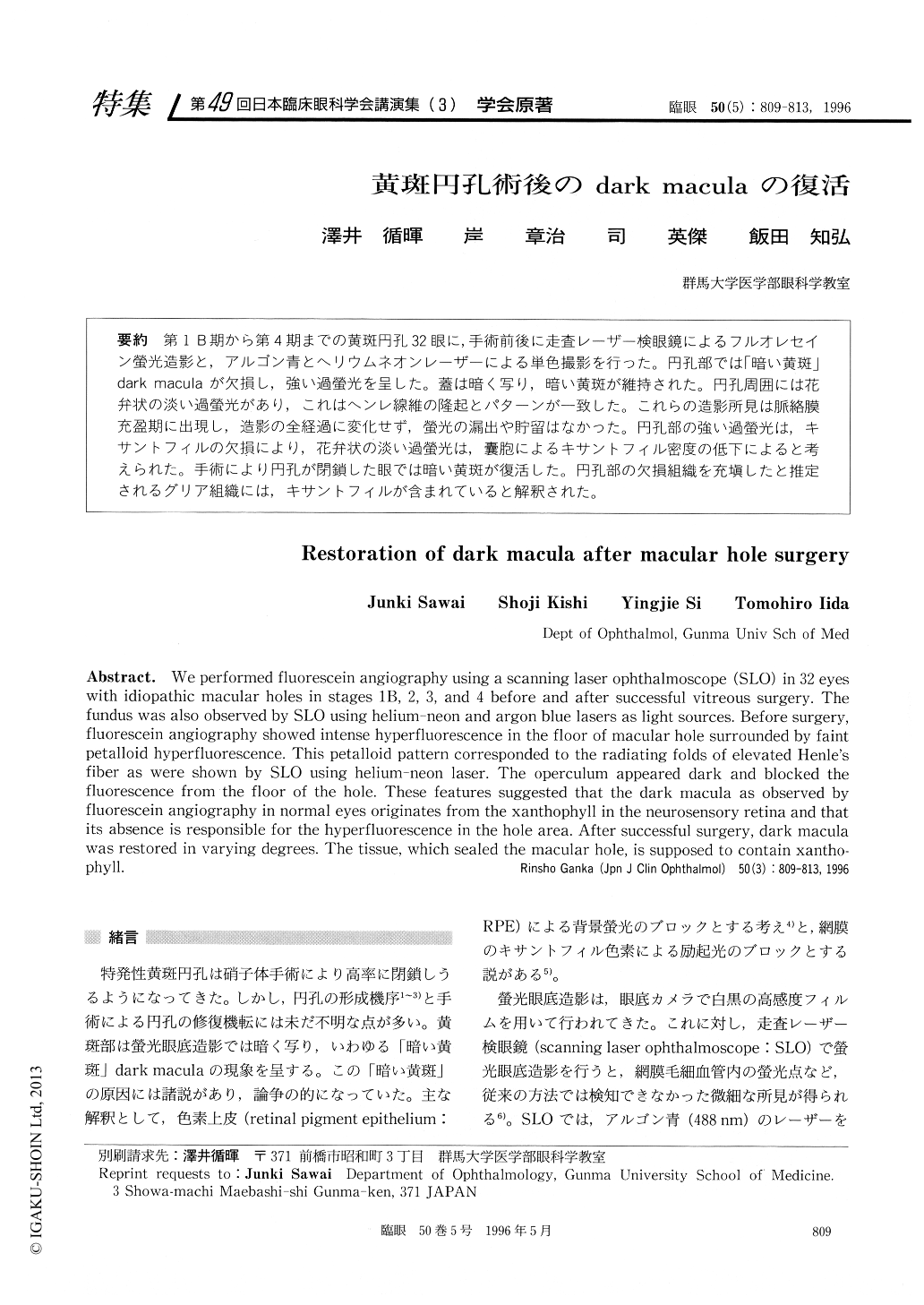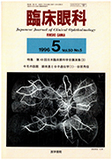Japanese
English
- 有料閲覧
- Abstract 文献概要
- 1ページ目 Look Inside
第1B期から第4期までの黄斑円孔32眼に,手術前後に走査レーザー検眼鏡によるフルオレセイン螢光造影と,アルゴン青とヘリウムネオンレーザーによる単色撮影を行った。円孔部では「暗い黄斑」dark maculaが欠損し,強い過螢光を呈した。蓋は暗く写り,暗い黄斑が維持された。円孔周囲には花弁状の淡い過螢光があり,これはヘンレ線維の隆起とパターンが一致した。これらの造影所見は脈絡膜充盈期に出現し,造影の全経過に変化せず,螢光の漏出や貯留はなかった。円孔部の強い過螢光は,キサントフィルの欠損により,花弁状の淡い過螢光は,嚢胞によるキサントフィル密度の低下によると考えられた。手術により円孔が閉鎖した眼では暗い黄斑が復活した。円孔部の欠損組織を充填したと推定されるグリア組織には,キサントフィルが含まれていると解釈された。
We performed fluorescein angiography using a scanning laser ophthalmoscope (SLO) in 32 eyes with idiopathic macular holes in stages 1B, 2, 3, and 4 before and after successful vitreous surgery. The fundus was also observed by SLO using helium-neon and argon blue lasers as light sources. Before surgery, fluorescein angiography showed intense hyperfluorescence in the floor of macular hole surrounded by faint petalloid hyperfluorescence. This petalloid pattern corresponded to the radiating folds of elevated Henle's fiber as were shown by SLO using helium-neon laser. The operculum appeared dark and blocked the fluorescence from the floor of the hole. These features suggested that the dark macula as observed by fluorescein angiography in normal eyes originates from the xanthophyll in the neurosensory retina and that its absence is responsible for the hyperfluorescence in the hole area. After successful surgery, dark macula was restored in varying degrees. The tissue, which sealed the macular hole, is supposed to contain xantho-phyll.

Copyright © 1996, Igaku-Shoin Ltd. All rights reserved.


